The name Kapunda probably comes from Aboriginal words for the water or springs in the area.
The Ngadjuri Aboriginal People
This area of Kapunda is traditionally occupied by the Ngadjuri Aboriginal people.
In 1836 Captain John Hindmarsh claimed Aboriginal people should have the same protection as the rest of “His Majesty’s Subjects”. This led to the appointment of the "Protector" of Aboriginal people. Missions were established to "civilise" and educate Aboriginal people and Ration Stations were set up to dispense food and blankets.
By the 1840s, many Aboriginal people were employed on farms and as servants and paid with food and lodging.
In March 1838, explorer John Hill led a party of four young pastoralists to the Kapunda region and they became the first Europeans in the area, as they searched for an overlanding route from the Murray.
The first miner's cottages were built by 1846, located close to the copper mine at Mine Square. Other buildings in the area were the miners’ store, Dr Blood's house, and the mine manager’s house. A second mine manager’s house was built in 1867.
Around 1847 a 30-inch, double-acting rotative beam engine (6-foot stroke), the first in Australia, had been purchased from Wheal Kitty in St. Agnes, Cornwall.
St John’s Catholic Church was established in 1850, about three miles (5km) from Kapunda. St. John's was used as a school and then, in 1897, under the supervision of Mary MacKillop, was made into a girls' reformatory. Nothing remains today.
"The Congregationalists were also active
in ministering to the spiritual needs of the
community. Mr William Oldham, the
first manager of the Kapunda Copper Mine
in 1853, gathered a few worshippers together
The Ngadjuri Aboriginal People
This area of Kapunda is traditionally occupied by the Ngadjuri Aboriginal people.
The name of the town is derived from an Aboriginal word, cappieoonda, meaning, "jumping water", which probably relates to the natural springs which exist in nearby rivers and creeks.
Traditionally, several years after a young man's wilyaru, and if he had shown considerable interest in magical matters, a Mindaba with some of his colleagues would take him out into the bush ... Here the postulant was red-ochred and smeared all over with fat ... The Mindaba taught him how to bring on a situation of trance and, in that context, to talk with spirits. He was also informed about various forms of magical healing and sorcery and, especially, how to control his own spirit, how to make it leave his body during a trance. Further, he would be instructed in the art of divination during an inquest that took place after a person's death, to discover who was magically responsible.
— Barney Waria 1944 & Ronald M Berndt 1986
It was generally believed that death was caused by sorcery, and so, the name of the deceased was never to be mentioned again.
With European settlement and the establishment of farming, there were less opportunities for Aboriginal hunting and gathering.
Aboriginal people passed down Dreamtime stories orally, to each generation, who also learnt the songs and dances of the clan.
Barney Waria, born in 1873 at Orroroo, is believed to be the last initiated Ngadjuri man on Ngadjuri Country. Waria's mother was the daughter of a medicine man (Sorcerer), his father was born at Booyoolie Aboriginal camp in the mid-north. Speaking to Ronald Berndt in 1944, Waria talked at great length about the creation of a "Mindaba" (Sorcerer) man and the powers and responsibilities that he wielded:
Traditionally, several years after a young man's wilyaru, and if he had shown considerable interest in magical matters, a Mindaba with some of his colleagues would take him out into the bush ... Here the postulant was red-ochred and smeared all over with fat ... The Mindaba taught him how to bring on a situation of trance and, in that context, to talk with spirits. He was also informed about various forms of magical healing and sorcery and, especially, how to control his own spirit, how to make it leave his body during a trance. Further, he would be instructed in the art of divination during an inquest that took place after a person's death, to discover who was magically responsible.
— Barney Waria 1944 & Ronald M Berndt 1986
It was generally believed that death was caused by sorcery, and so, the name of the deceased was never to be mentioned again.
 |
| South Australian Aboriginal people - very early 1900s, Kaye |
Before or after birth, a child was given totems that link a person directly to the spiritual world of the Dreamtime. Totems also determine people’s relationships with each other and who one can marry.
According to the early resource, The Native Tribes of South Australia, girls would wear a sort of apron of fringe, called kaininggi, until they bear their first child. According to this source, boys from the age of ten could not cut their hair until they are initiated.
A newspaper article mentions the Aboriginal people of the town in the early days of settlement:
In the early days, there was a great number
of natives about, camp being
where the Railway Station is now.
They used to strip the bark off the
large gum trees and spread it out flat
and put a weight on it to keep it from
buckling up while it dried a little, and
then built their wurlies with it.
"REMINISCENCES OF THE EARLY DAYS OF KAPUNDA." Kapunda Herald (SA : 1878 - 1951) 23 September 1927of natives about, camp being
where the Railway Station is now.
They used to strip the bark off the
large gum trees and spread it out flat
and put a weight on it to keep it from
buckling up while it dried a little, and
then built their wurlies with it.
Conflict and disease to which Aboriginal people had no immunity severely reduced Aboriginal populations.
In 1836 Captain John Hindmarsh claimed Aboriginal people should have the same protection as the rest of “His Majesty’s Subjects”. This led to the appointment of the "Protector" of Aboriginal people. Missions were established to "civilise" and educate Aboriginal people and Ration Stations were set up to dispense food and blankets.
By the 1840s, many Aboriginal people were employed on farms and as servants and paid with food and lodging.
Exploration
Copper
Kapunda is Australia's oldest commercial copper mining town, situated near the famous Barossa wine region. The town was established after the discovery of copper in 1842, by Francis Dutton and Charles Bagot.
Francis Dutton of "Anlaby" (Anlaby was the 1st merino and clydesdale stud in South Australia and was also a staging point for the explorers Sturt, and McKinlay), was searching for sheep during a storm when he noticed a rock which appeared to be covered with green moss.
 |
| The Anlaby Homestead. The original homestead had a thatched roof. The ladies can be seen on the verandah. The homestead is surrounded by a brush fence. Demolished 1905. State Library SA. |
 |
| The Anlaby homestead was built in 1840, extended in the 1850s and again in 1908 and 1928. Kapunda Herald (SA : 1878 - 1951), Friday 3 July 1903 |
Dutton took a piece of the rock to show his neighbour, Captain Charles
Bagot of "Koonunga". Bagot showed Dutton a similar piece of rock, which had been found by his
son. This green rock, they soon discovered, was copper ore.
Dutton and Bagot kept the copper discovery secret until they could purchase the
land on which the ore was found. The pair then bought 80 acres (32.3 hectares), including the rights to the mineral wealth, for about one pound per acre. In later years, Francis Dutton went on to become Premier of South Australia.
The first miners in the area, mostly Cornish, lived in tents and some built dugouts in the bank of the creek.
From 1844 to 1849 the ore was transported to Port Adelaide and then shipped to Wales for smelting. A smelting works was set up at Kapunda in December 1849.
From 1844 to 1849 the ore was transported to Port Adelaide and then shipped to Wales for smelting. A smelting works was set up at Kapunda in December 1849.
In 1845 a hut was built as a Methodist chapel near the mine. A more substantial chapel was built in 1849 and a Gothic-style Churh in 1858.
was discovered at Burra in 1845, and businesses at Kapunda supplied goods and services to Burra, which by 1850, was the largest metal mine in Australia.
The town of Kapunda was laid out in 1845. By 1851 the town had a population of about 2000 people. The population was diverse, Cornish, Irish, Welsh, English and German. However, the Victorian gold rush caused many miners to leave Kapunda and their jobs and take off for the goldfields.
1850s
In 1850 a 36-inch Bull engine from Cornwall (spelt Buhl at Kapunda), was installed, for pumping.
in ministering to the spiritual needs of the
community. Mr William Oldham, the
first manager of the Kapunda Copper Mine
in 1853, gathered a few worshippers together
in the old mine store and conducted
services regularly till the year 1858, when
it was resolved to build a church —
services regularly till the year 1858, when
it was resolved to build a church —
the front portion of' the present edifice. Mr.
William was ordained and became the first
pastor."
William was ordained and became the first
pastor."
BACK TO KAPUNDA." The Register (Adelaide, SA : 1901 - 1929) 15 September 1927
The Telegraph line was extended to Kapunda in 1859.
The arrival of the railway in 1860 was instrumental in the expansion of Kapunda. The first station master was John Carroll.
 |
| Kapunda Christ Church Anglican Church with a spire and clock tower was built in 1856.Kapunda Herald (SA : 1878 - 1951), Friday 12 June 1908 |
 |
| The Methodist Church opened 25 December 1858, Kapunda Herald (SA : 1878 - 1951), Friday 13 November 1908 |
1860s
The Railway Hotel was built about 1860. And many other hotels and businesses were established.
1870s
By the 1870s, many Aboriginal people were living in camps on the outskirts of town. The missions that existed were mostly operated by the Lutherans. Many of the Lutherans and others recorded Aboriginal words and language, which are proving useful for Aboriginal language revival programs.
Land to the north of the mine was subdivided for housing as it did not contain ore.
Kapunda copper mine closed in 1878. South Australia’s population over 250,000.
Kapunda school was built in 1878.
1900s
Phosphate deposits were found in 1903.
The Cornish
Rainbird (Reinbird) Murders
Mary Ann Rainbird, the wife of wheelwright Robert Rainbird, and her two young children were found March 12 1861, in a wombat hole near their Hamilton farm, outside Kapunda. The trial of six local Aboriginal men for the crime resulted in Miltinda "Bobby" Pilti, possibly of Ngadjuri heritage, being convicted and executed for the murder of the Rainbird family at Kapunda.
One of the Aboriginal men, Jimmy Pike, turned Queen' s Evidence. He was released and ostracised by his tribe.
Catholic church, St Rose of Lima, was built in Kapunda in 1863.
The population reached 10,000 during the 1860s.
 |
| South Australian Advertiser (Adelaide, SA : 1858 - 1889), Saturday 25 May 1861 |
Catholic church, St Rose of
Lima, was built in Kapunda in 1863
Catholic church, St Rose of
Lima, was built in Kapunda in 1863
There were about 30 cottages for mines and other works in 1866. However, as mining slowed, Kapunda developed agricultural and manufacturing businesses.
 |
| Kapunda Courthouse, SA. built 1866, Kapunda Herald (SA : 1878 - 1951), Friday 3 March 1905 |
1870s
By the 1870s, many Aboriginal people were living in camps on the outskirts of town. The missions that existed were mostly operated by the Lutherans. Many of the Lutherans and others recorded Aboriginal words and language, which are proving useful for Aboriginal language revival programs.
 |
| Main street of Kapunda. Circa 1871. State Library of SA. |
 |
| Brewster's Store was on the corner of Main and Tod Streets, Kapunda, SA, c1871, NLA |
 |
| View of Kapunda. Circa 1871.State Library of SA |
 |
| Kapunda Institute, SA, opened July 1871, Kapunda Herald (SA : 1878 - 1951), Friday 1 January 1904 |
 |
| Shops in the Main Street of Kapunda in 1871. State Library of SA. |
The Dutton family of Anlaby contributed greatly to Kapunda. In 1875 the family donated £500 to establish a recreation ground.
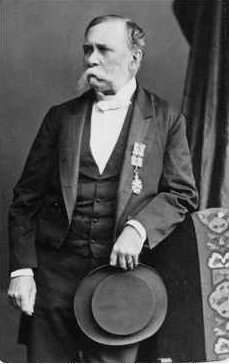 |
| Francis Stacker Dutton was the seventh Premier of South Australia, serving twice |
 |
| The foundation stone of a hospital at Kapunda was laid with Masonic honors on Tuesday, January 9 1877, Kapunda Herald (SA : 1878 - 1951), Friday 1 January 1904 |
1900s
 |
| Main Street Kapunda looking north, SA, Adelaide Observer (SA : 1843 - 1904), Saturday 3 September 1904 |
 |
| The Vyse family were originally Norwegian, but came from England. Kapunda Herald (SA : 1878 - 1951), Friday 13 October 1905 |
 |
| Phosphate miners, Kapunda, SA, Kapunda Herald (SA : 1878 - 1951), Friday 7 September 1906 |
 |
| Vogt Bros. Factory, Kapunda, SA, Kapunda Herald (SA : 1878 - 1951), Friday 3 July 1903, |
 |
| Kapunda Show, Kapunda Herald (SA : 1878 - 1951), Friday 13 October 1905 |
The Cornish
The expertise of the Cornish miners was central to the enterprise of copper mining at Kapunda. As was the purchase of a beam pumping engine in 1848, from Cornwall, for removing water from mine shafts. A beam engine was first used by Thomas Newcomen around 1705 to remove water from mines in Cornwall.
 |
| Group of men and a boy, some holding tools of trade, thought to be residents at Kapunda. Public domain |
Irish: Baker's Flat Clachan
Under a field, about 1 kilometre from the town of Kapunda lay the remains of the Baker's Flat clachan (a small Irish settlement).
In 1854, a group of Irish people arrived at Kapunda wanting work in the mines. The Irish then squatted on an empty piece of land called Baker's Flat and created a traditional Irish village called a clachan.
South Australian Chronicle (Adelaide, SA : 1889 - 1895), Saturday 15 August 1891
Sir Sidney Kidman
The Kapunda Herald
Sir sidney Kidman presented his home "Eringa" to the State Education Department to be used as a high school in 1921.
Writer, Colin Thiele (1920-2006) attended Kapunda High School from 1935-36. He said: "For there is no school in South Australia like Kapunda High School. In every way it is unique".
In the following year, with the advance of the Japanese forces, Bullwinkel and 65 other nurses boarded the SS Vyner Brooke, to be evacuated, but the ship was sunk by Japanese aircraft. Only 21 nurses and a group of men, women and children made it ashore at Radji Beach on Banka Island.
Aboriginal Affairs Act 1962 removed all restrictions and restraints on Aboriginal people and it was no longer the responsibility of the State to provide for Aboriginal children. Don Dunstan was appointed Minister of Aboriginal Affairs.
Things To Do and Places To Go
Kapunda Heritage Trail
Self-guided Heritage walk
Kapunda Museum
Although some of the reports about the settlement at baker's Flat are uncomplimentary, archaeology is revealing some very interesting artefacts and hints about this Irish/Australian community.
"At Baker's Flat there are about 45 habitations
occupied by families ranging
from three to eight in number, but there are only four
closets altogether, and it is doubtful if these are even
used. Drinking water in this locality is obtained
from shallow clay pans, which are filled by surface
drainage. In other respects the district is in fair
sanitary condition."
from three to eight in number, but there are only four
closets altogether, and it is doubtful if these are even
used. Drinking water in this locality is obtained
from shallow clay pans, which are filled by surface
drainage. In other respects the district is in fair
sanitary condition."
 |
| Irish house at Baker's Flat, Kapunda, SA |
 |
| The “clachan” at Baker's Flat, Kapunda, SA |
By 1857, mining in Kapunda had resumed, and in 1862, 4000 tonnes of copper was produced. The railway reached Kapunda in 1860, and in 1865, Kapunda was proclaimed a town.
Sir Sidney Kidman
The celebrated pastoralist Sir Sidney Kidman arrived in Kapunda, at age 13, with his famed one-eyed horse after running away from home. He spent the night at the Prince of Wales Hotel, and the next day, he set off to seek his fortune.
Kidman did indeed make his fortune, as at one time he owned 68 properties which had a total area larger than the British Isles. Kapunda was also the site of Kidman's annual horse sales, first held at the rear of the North Kapunda Hotel in October 1900.
 |
| Group portrait of three males, including Sir Sidney Kidman, at Kapunda, ca. 1912-1914 / photograph by Charles A. Petts |
The Kapunda Herald
The Northern Star newspaper was the first English language newspaper established in Kapunda by George Massey Allen around 1860. Later, James Elliott and James Scandrett bought the newspaper's printing press and the newspaper was renamed Kapunda Herald and Northern Intelligencer by Charles Hastings Barton in about 1864. In 1878, the newspaper was renamed, The Kapunda Herald.
1900s Continued
WWI
1900s Continued
By the early 1900s, Aboriginal children were being removed from their mother's and placed in institutions to educate them to a basic level and provide training for jobs such as nursemaids and stockmen. This caused much distress.
 |
| Kapunda Town Council Chamber on Clare Road. The Town Corporation moved into the new council chambers in 1876. Photo dated about 1900, SLSA |
 |
| Mr Vogt's pair in German wagon, Kapunda Show, SA, Observer (Adelaide, SA : 1905 - 1931), Saturday 7 October 1905 |
 |
| Opening of new gateway Dutton Park, Kapunda. SA, Kapunda Herald (SA : 1878 - 1951), Friday 12 October 1906 |
 |
| Kapunda horse sale yards, Kapunda Herald (SA : 1878 - 1951), Friday 9 October 1908 |
 |
| Kapunda, SA, Kapunda Herald (SA : 1878 - 1951), Friday 11 September 1908, |
 |
| Kapunda Herald (SA : 1878 - 1951), Friday 14 August 1908 |
 |
| Tree planting at Dutton park, Kapunda, SA, Kapunda Herald (SA : 1878 - 1951), Friday 13 August 1909 |
 |
| Empire Day, Kapunda, SA, Kapunda Herald (SA : 1878 - 1951), Friday 13 August 1909 |
 |
| Scene at Kapunda Races, SA, Kapunda Herald (SA : 1878 - 1951), Friday 12 February 1909 |
 |
| Three well dressed gentlemen, one with the top hat wearing a clerical collar pose in front of the original Methodist meeting house, Kapunda, SA. The building is in a dilapidated state. 1910 |
 |
| Kapunda Hospital, SA - Interior view of one of the Wards. Circa 1912 |
 |
| Opening of Congregational Sunday school Hall, Kapunda, SA, Observer (Adelaide, SA : 1905 - 1931), Saturday 10 May 1913 |
WWI
 |
| Light Horse Training Camp, Kapunda, SA, Chronicle (Adelaide, SA : 1895 - 1954), Saturday 28 March 1914 |
 |
| Masonic Lodge, Kapunda, SA, opened 1914, Kapunda Herald (SA : 1878 - 1951), Friday 29 May 1914 |
 |
| Soldiers at Kapunda SA, c1915, State Library of South Australia |
 |
| Kapunda's tribute to returned soldiers, Observer (Adelaide, SA : 1905 - 1931), Saturday 26 February 1916 |
 |
| Methodist Girls Red Cross Society in Kapunda, South Australia - 30 May 1917 Kaye |
 |
| Recruiting tour Northern Districts at Kapunda, crowd and army band assembled, c1918, State Government Photographer |
1920s
 |
| "Eringa", Kapunda, SA, donated to the Government by Sir Sidney Kidman for educational purposes, in 1921. The building had been constructed for Alexander Greenshields in 1879. . |
 |
| Sports at Kapunda, SA, Observer (Adelaide, SA : 1905 - 1931), Saturday 3 February 1923 |
 |
| News (Adelaide, SA : 1923 - 1954), Saturday 16 February 1924 |
 |
| In the old Gundry Hill stable yard al Kapunda, SA, are several of the old Cobb & Co. coaches, in an unfortunate state of disrepair, Observer (Adelaide, SA : 1905 - 1931), Saturday 10 January 1925 |
 |
| Main street, Kapunda, looking north. / Before 1927' .No known copyright restrictions |
1930s
 |
| Salt Bush Jimmy, Advertiser (Adelaide, SA : 1931 - 1954), Thursday 6 October 1932 |
 |
| Chronicle (Adelaide, SA : 1895 - 1954), Thursday 19 July 1934 |
 |
| Chronicle (Adelaide, SA : 1895 - 1954), Thursday 17 October 1935 |
St Roses Catholic Church built 1938.
1940s
WWII
During World War II a munitions factory was located at Dutton park.
Vivian Bullwinkel
Vivian Bullwinkel was born at Kapunda in 1915 and later trained as a nurse and midwife. She volunteered during WWII to work as a nurse with the Royal Australian Air Force but she was rejected for having flat feet. Bullwinkel then joined the Australian Army Nursing Service and was sent to Singapore.
Vivian Bullwinkel was born at Kapunda in 1915 and later trained as a nurse and midwife. She volunteered during WWII to work as a nurse with the Royal Australian Air Force but she was rejected for having flat feet. Bullwinkel then joined the Australian Army Nursing Service and was sent to Singapore.
In the following year, with the advance of the Japanese forces, Bullwinkel and 65 other nurses boarded the SS Vyner Brooke, to be evacuated, but the ship was sunk by Japanese aircraft. Only 21 nurses and a group of men, women and children made it ashore at Radji Beach on Banka Island.
The next day, the group were joined by about 100 other people, including about twenty English soldiers, whose ship had also been sunk by the Japanese. The group decided to surrender.
Of the nurses, Vivian Bullwinkel was the only survivor. After surrendering, the nurses and crew from the two sunken ships were gunned down after being directed to walk into the surf.
 |
| CENTENARY OF KAPUNDA. His Excellency the Governor (Sir Willoughby Norrie Chronicle (Adelaide, SA : 1895 - 1954), Thursday 10 October 1946 |
1950s
 |
| News (Adelaide, SA : 1923 - 1954), Tuesday 5 June 1951 |
 |
| News (Adelaide, SA : 1923 - 1954), Wednesday 20 August 1952 |
1960s
Around Kapunda
Interestingly, in recent years, Kapunda featured on a television show, "Haunting: Australia", which claimed that Kapunda was home to the most haunted Hotel in Australia.
Interestingly, in recent years, Kapunda featured on a television show, "Haunting: Australia", which claimed that Kapunda was home to the most haunted Hotel in Australia.
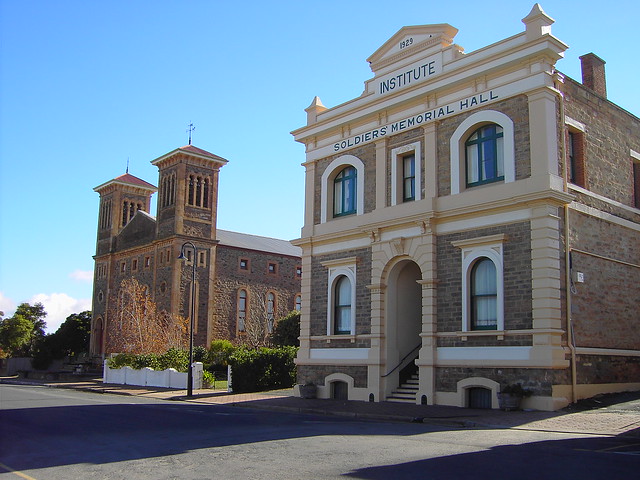 |
| Kapunda Institute 1870, SA, and former Baptist Church built in 1866 |
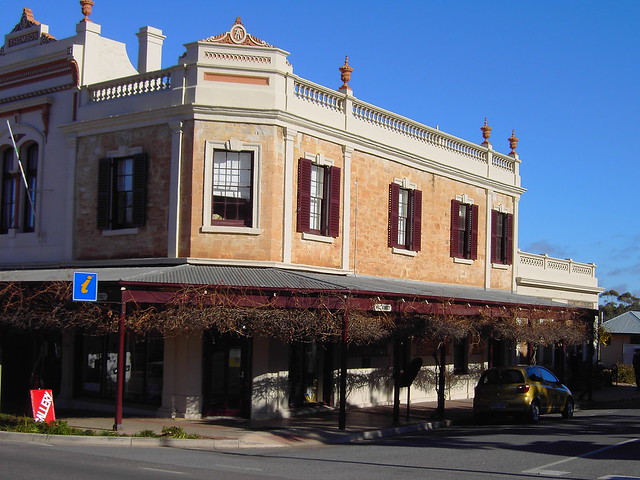 |
| Old General Store. Now Kapunda Information Centre. SA, but it was formerly Andrew Thomson's General Store built in 1860 |
 |
| Kapunda's North Kapunda Hotel was featured on international hit television show " |
 |
| Kapunda, SA. Entrance to the triangular shaped War Memorial Hall. Denisbin |
| St Rose's Catholic Church at Kapunda, SA |
 |
| Kapunda, SA. Steps to the Art Nouveau entrance door of Eringa House. Home of Sir sidney Kidman, presented to the State Education Department. Kapunda High School from 1923. |
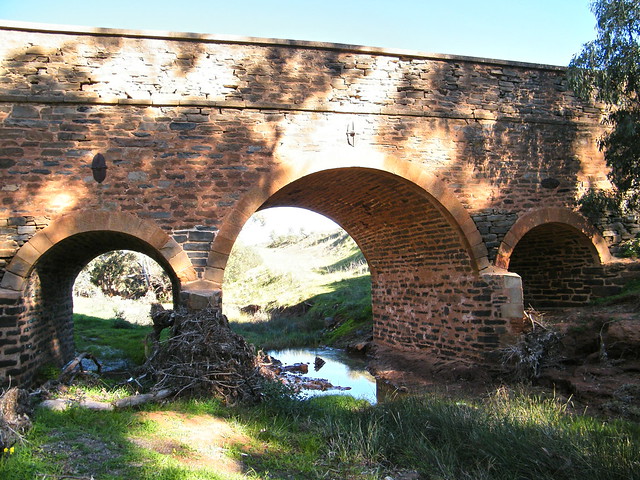 |
| Old 1857 triple arch stone bridge on outskirts of Kapunda, SA. |
 |
| The Kapunda state primary school, SA. It opened in 1878 |
 |
| Old offices built around 1860. Later taken over as offices for Sir Sidney Kidman, Kapunda SA. |
 |
| The restored Anlaby gardens at the former home of the Dutton family near Kapunda, SA |
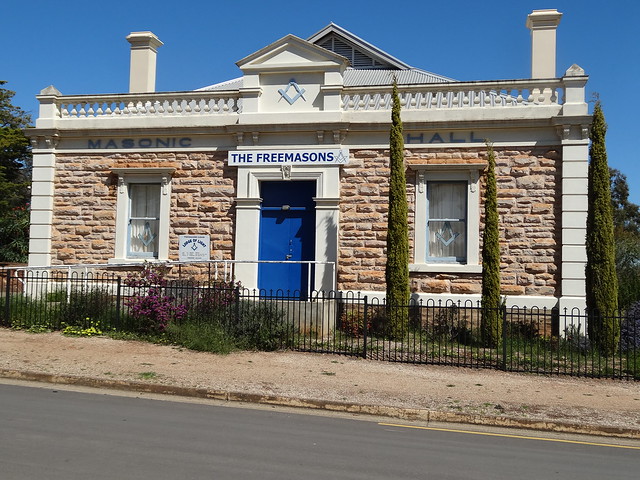 |
| The Masonic Hall now the Freemasons. Masonic Lodge was established in Kapunda, SA, in 1860. |
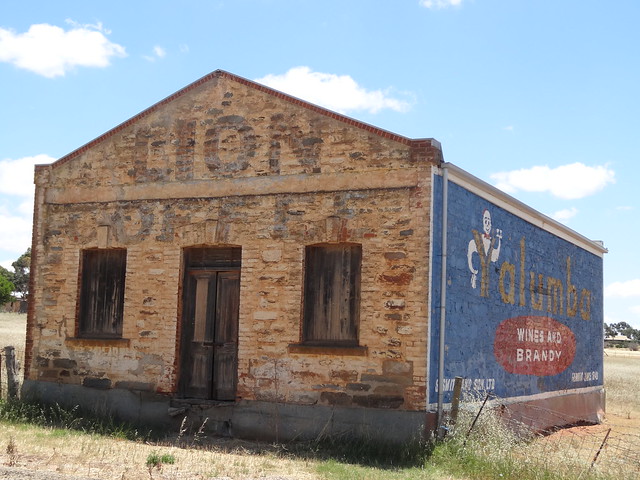 |
| Kapunda, SA. Old stone store on edge of the town with quaint old advertising |
 |
| Institute/Soldiers' memorial Hall (1870), Kapunda SA Michael Coghlan |
 |
| The foundation stone of St John the Evangelist Church, Kapunda, SA, was laid by Bishop Francis Murphy on 2 April 1850 |
| The Anglican Christ Church at Kapunda, SA, was built in 1856 |
 |
| Kapunda mines, SA. part of the Heritage Trail |
 |
| The former Railway Hotel, Kapunda, SA, built in 1860 |
 |
| Mount St Rose Convent, SA, privately owned, constructed from 1887-1962 |
 |
| One of many stone villa houses from the 1880s with wonderful cast iron lace work on the veranda cast in the Hawke Foundry of Kapunda, SA. Denisbin |
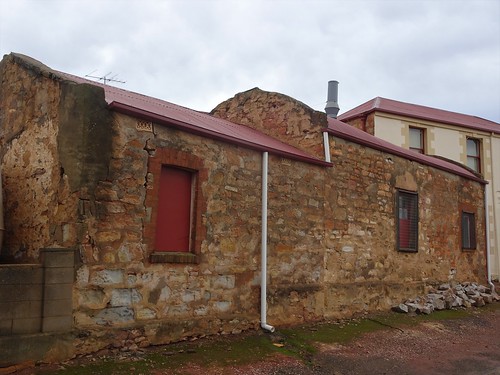 |
| Kapunda, SA. Stables and sheds behind the Prince of Wales Hotel. The hotel was established in 1858. Denisbin |
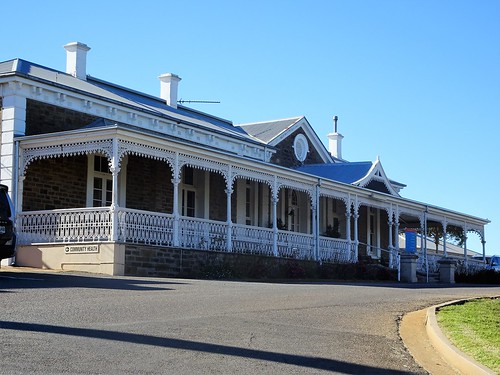 |
| Kapunda Hospital, SA. Built in 1877. Denisbin |
 |
| Map the Miner, also known as Map Kernow or the Son of Cornwall, is a 7-metre (23 ft) statue commemorating the Cornish mining history of the town of Kapunda, SA |
 |
| Kapunda mines, SA, 1862 built Buhl Winding House (Bull) |
 |
| Kapunda Mines, SA |
Things To Do and Places To Go















.jpg)